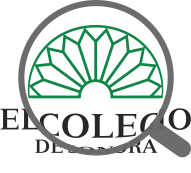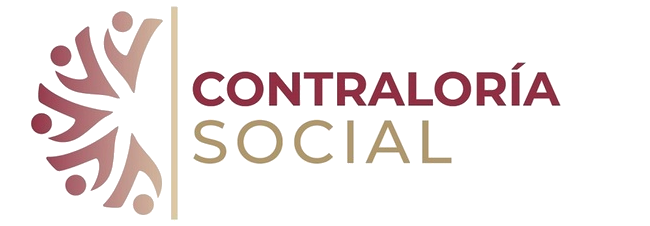Mapping of actors and formation of bodies of fishing participation
El mapeo de actores y conformación de cuerpos de participación pesquera
| dc.contributor.author | Zepeda Domínguez, José Alberto | |
| dc.contributor.author | Ponce Díaz, Germán | |
| dc.contributor.author | Vergara Solana, Francisco Javier | |
| dc.coverage.spatial | MX-SON | en-US |
| dc.creator | ZEPEDA DOMINGUEZ, JOSE ALBERTO; 321010 | |
| dc.creator | PONCE DIAZ, GERMAN; 120189 | |
| dc.creator | VERGARA SOLANA, FRANCISCO JAVIER; 349170 | |
| dc.date | 2017-01-01 | |
| dc.date.accessioned | 2022-06-28T19:42:35Z | |
| dc.date.available | 2022-06-28T19:42:35Z | |
| dc.date.issued | 2017-01-01 | |
| dc.identifier | https://regionysociedad.colson.edu.mx:8086/index.php/rys/article/view/221 | |
| dc.identifier | https://doi.org/10.22198/rys.2017.68.a221 | |
| dc.identifier.uri | https://regionysociedad.colson.edu.mx:8086/index.php/rys/article/view/221 | |
| dc.identifier.uri | https://doi.org/10.22198/rys.2017.68.a221 | |
| dc.identifier.uri | https://repositorio.colson.edu.mx/handle/2012/45607 | |
| dc.description.abstract | Management of fisheries includes numerous sectors with different interests; thus, in order to reconcile these, the establishment of bodies of co-management bodies is suggested. Their formation begins with the selection of representative actors of the sectors involved; however, this has not been regulated, which makes its widespread implementation difficult. Here, an efficient and transparent method for identifying the key actors from four fisheries is evaluated in order to try it in different contexts. So as to identify the effort needed to get to know these actors, techniques of social and natural sciences were combined. In each case it was found that two informants, with an experience of twenty years in fishing management, identified the four sectors included here, and another ten, from other areas, did the same with the majority of key actors. This method cannot be used a priori to calculate the sample size; it is designed to be applied after the sampling is carried out or during the interviews. In contrast to traditional methodology, it is possible to transparently define at what moment to stop the process of data collection. These results demonstrate that the method can be standardized and implemented in order to facilitate the forming of co-management bodies. | en-US |
| dc.description.abstract | El manejo de pesquerías implica a múltiples sectores con intereses distintos, para conciliarlos se plantea establecer cuerpos de comanejo; su conformación comienza con la selección de actores representativos de los sectores involucrados, pero esto no se ha reglamentado, lo que dificulta su implementación generalizada. Aquí se evalúa un método eficaz y trasparente para identificar a los actores clave de cuatro pesquerías, y probarlo en contextos distintos. Con el fin de identificar el esfuerzo necesario para conocer a estos actores, se combinaron técnicas de las ciencias sociales y de las naturales. En cada caso se encontró que dos informantes, con veinte años de experiencia en el manejo pesquero, identificaron a los cuatro sectores incluidos aquí, y que otros diez, provenientes de otros ámbitos, hicieron lo propio con la mayoría de los actores clave. El método no puede utilizarse a priori para calcular el tamaño de muestra, está enfocado para aplicarse después de terminado el muestreo o bien durante las entrevistas. En contraste con la metodología tradicional, es posible definir, de una manera trasparente, en qué momento detener el proceso de recolección de datos. Estos resultados comprueban que el método se puede estandarizar e implementar, para facilitar la conformación de cuerpos de comanejo. | es-ES |
| dc.format | application/pdf | |
| dc.format | application/xml | |
| dc.language.iso | spa | |
| dc.publisher | El Colegio de Sonora | es-ES |
| dc.relation | https://regionysociedad.colson.edu.mx:8086/index.php/rys/article/view/221/1018 | |
| dc.relation | https://regionysociedad.colson.edu.mx:8086/index.php/rys/article/view/221/1066 | |
| dc.relation | https://regionysociedad.colson.edu.mx:8086/index.php/rys/article/view/221/1254 | |
| dc.rights | Derechos de autor 2017 José Alberto Zepeda Domínguez, Germán Ponce Díaz, Francisco Javier Vergara Solana | es-ES |
| dc.rights | https://creativecommons.org/licenses/by-nc/4.0/ | es-ES |
| dc.rights | info:eu-repo/semantics/openAccess | es-ES |
| dc.source | 2448-4849 | |
| dc.source | 1870-3925 | |
| dc.source | región y sociedad; Vol. 29 No. 68 (2017): January-April | en-US |
| dc.source | región y sociedad; Vol. 29 Núm. 68 (2017): enero-abril | es-ES |
| dc.subject | Northwestern mexico’s fishing industry | en-US |
| dc.subject | Co-management bodies | en-US |
| dc.subject | Northwestern mexico’s fisheries | en-US |
| dc.subject | Sociological interviews | en-US |
| dc.subject | Cooperative fishery resources | en-US |
| dc.subject | Sustainable development | en-US |
| dc.subject | Industria pesquera del noroeste de méxico | es-ES |
| dc.subject | Cuerpos de comanejo | es-ES |
| dc.subject | Pesquerías del noroeste de méxico | es-ES |
| dc.subject | Entrevistas en sociología | es-ES |
| dc.subject | Recursos pesqueros cooperativos | es-ES |
| dc.subject | Desarrollo sostenible | es-ES |
| dc.subject | Ciencias Sociales | |
| dc.subject.lcsh | Northwestern mexico’s fishing industry | en-US |
| dc.subject.lcsh | Co-management bodies | en-US |
| dc.subject.lcsh | Northwestern mexico’s fisheries | en-US |
| dc.subject.lcsh | Sociological interviews | en-US |
| dc.subject.lcsh | Cooperative fishery resources | en-US |
| dc.subject.lcsh | Sustainable development | en-US |
| dc.subject.lcsh | Industria pesquera del noroeste de méxico | es-ES |
| dc.subject.lcsh | Cuerpos de comanejo | es-ES |
| dc.subject.lcsh | Pesquerías del noroeste de méxico | es-ES |
| dc.subject.lcsh | Entrevistas en sociología | es-ES |
| dc.subject.lcsh | Recursos pesqueros cooperativos | es-ES |
| dc.subject.lcsh | Desarrollo sostenible | es-ES |
| dc.title | Mapping of actors and formation of bodies of fishing participation | en-US |
| dc.title | El mapeo de actores y conformación de cuerpos de participación pesquera | es-ES |
| dc.type | análisis de actores | es-ES |
| dc.type | info:eu-repo/semantics/article | |
| dc.type | info:eu-repo/semantics/publishedVersion | |
| dc.audience | generalPublic | |
| dc.identificator | 5 |
Files in this item
| Files | Size | Format | View |
|---|---|---|---|
|
There are no files associated with this item. |
|||










